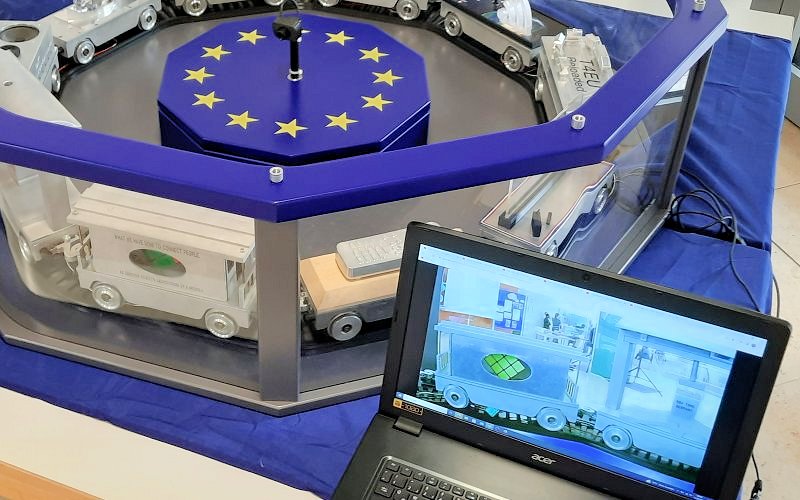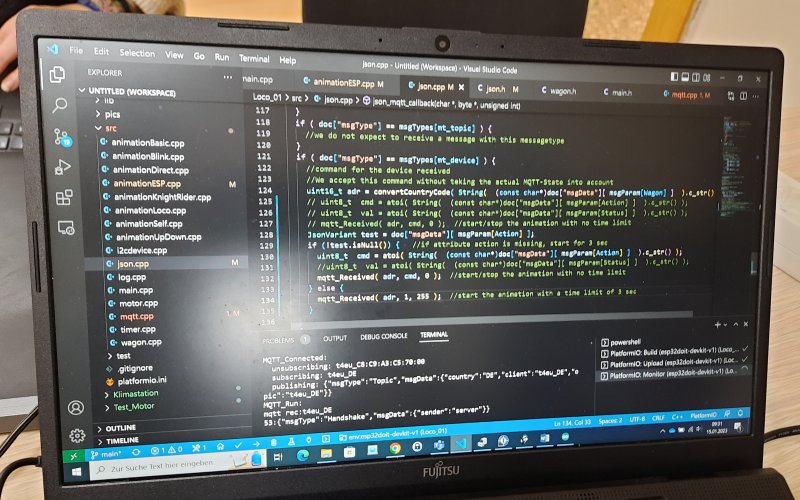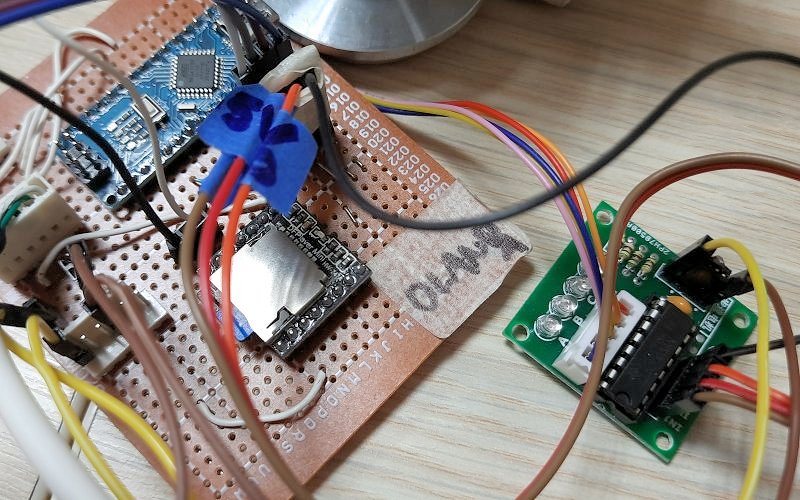
| PROJECT BOOK (10 MB) |
TEACHING MATERIAL (60 MB) |
TECHNICAL SPECIFICATION |
 |
 |
 |
Documentation is part of every technical project, especially if the result is to be used sustainably as a learning tool in lessons. And so several workgroups merged to create a project book with technical specifications. On the one hand, the students described their cultural impressions and on the other hand they also provided a variety of technical details with the focus on electronics, informatics and mechanics. Due to the complexity of the task, the challenge did not prove to be easy. Nevertheless, the results are very impressive!
For any element and part no matter how important or which size, the students had to provide Technical Drawings of the complete showcase including the 360° webcam system to make visibility possible before starting manufacturing. That means that every single piece and then every module had to be planned and prepared in the work groups, then combined in work lines and finally transformed into CNC-code for the wood milling process or STEP-files used in 3D-printing. Making sure that every part and element then would in the end do its job was a huge challenge for every participant.
| CAMERA SYSTEM Assembly STEP-File |
CAMERA SYSTEM 3D-Printing STL-Files |
CAMERA SYSTEM Parts List |
 |
 |
 |
| SHOWCASE Assembly STEP-File |
SHOWCASE Component STEP-Files |
SHOWCASE Parts List |
 |
 |
 |

| RAILWAY TRACKS 3D-Printing STL-Files |
optionally SHOWCASE XL (scaled to fit the tracks) |
 |
 |

| ADMIN'S GUIDE Video Streaming Path |
 |
 |
Users should access the showcases of other partner schools remotely via a user web interface. The operators could then observe the animations carried out there via our 360° webcam system. Therefore, the necessary video stream path is realized using existing tools, just like professional influencers do. The video stream recorded by the webcam is sent via Open Broadcaster Software (OBS) to a YouTube channel, which is then publicly broadcast. Our user web interface in turn switches to the corresponding YouTube channel and displays the recorded video on a screen window shown in our user web interface at pc, laptop or smartphone.
This installation instruction is published as a guide for administrators only.
Users do not need to install the video streaming path as it is fully managed by our user web interface.

For controlling the wagon animations and the camera system it’s necessary to have a microcontroller board with an integrated ESP32 in the middle of the showcase. The program code algorithm for the ESP32 has been provided by students as well as the circuit board itself, which was produced in the school workshops in Croatia. In Germany then, during the final meeting, the different parameters were clearly defined to reach proper function. The board layout and all the needed information have been published for public use within our project web.

| INSTALLATION GUIDE ESP32 Microcontroller |
PROGRAM CODE ESP32 Microcontroller |
 |
 |
Feel free to ask our GitHub for the latest updates!

Our project root server is the heart of our control system and is provided by a leading online service provider. In contrast to a web server for simple Internet pages, such a kind of server includes an operating system so that our program code can be executed. In order to communicate with the animated wagons and the camera system via user web interface, we installed a Mosquitto MQTT broker that is linked to a Mongo database. The program code was written by using the compilable Google Go programming language, which is available as open source.
 |
 |
 |
 |
 |
| INSTALLATION PACKAGE MQTT Broker / Mongo DB Project Root Server |
 |
The program code stored at our project root server was written using the compilable Google Go programming language, which is available free of charge as open source. Once the user is selecting a wagon, the user web interface is sending a signal to the project root server, where an MQTT broker is installed, which in turn activates the ESP32 expander of the selected wagon via the Internet. Simultaneous animation requests are processed serially in a queue managed by our MQTT broker linked to a Mongo database. The user web interface was designed with HTML and special effects were implemented with Java.
Our project root server is operated by
Hetzner Online GmbH
We chose the "CAX11 - Cloud Server" version:







